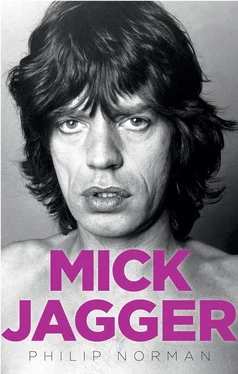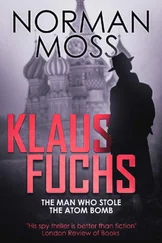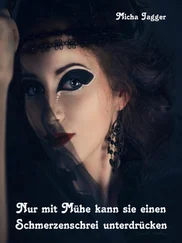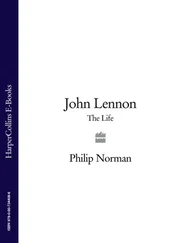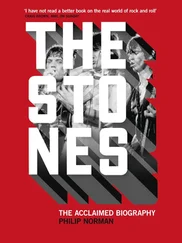Cleo was formidably bright as well as beautiful, and remembers ‘quite heavy’ discussions with Mick about politics and current affairs. He even suggested that when she left school, as she was soon to do, she should try to get into LSE so that they could see more of each other. She remembers his sense of humour and love of mimicking people, like the West Indian staff on the Underground shouting ‘Mind the doors!’ ‘Bill Wyman had just joined the band, and Mick used to laugh about him coming from Penge.’ The later stories of his stinginess are baffling to Cleo. ‘He was always so generous to me. Once, he bought me a huge box of chocolates that he’d spent all his money on, even his bus fare, so he had to walk all the way home to Chelsea.’
He was also welcomed into the Euston council flat where Cleo lived with her mother, Laureen, the Blitz-era cabaret dancer, and their fluffy black-and-white cat. ‘My mum thought he was great, even though the neighbours used to mutter about his long hair. I’d come home to find the two of them nattering away together. Mick used to practise his stage moves in front of our mirror.’ Cleo, on the other hand, paid only fleeting visits to 102 Edith Grove – and never stayed overnight. Her main memory of his domicile is ‘trying to scrape the laboratory cultures out of the milk bottles’.
Cleo’s home became a refuge for the whole band, with Brian making himself at home in his usual way and competing with Mick for the fascinating Laureen’s attention. ‘Brian used to love having our cat on his knees and stroking it,’ Cleo recalls. ‘When he left, his velvet suit used to be covered in white hairs, so my mum would run the Hoover over him as he stood there. One morning after an all-nighter, I took Mick and Brian back to our place for breakfast and my friend took Keith to hers. But my friend’s dad was a Nigerian and a bit militant. He said, “Get outa my house, white man,” took a spear down from the wall, and chased Keith with it.’
Chronically hard up as they were, the Rollin’ Stones never turned down any job, however low-paying and hard to reach through the snow and slush. One night their Marquee audience included a Hornsey School of Art student named Gillian Wilson (in later life to become curator of the Getty Museum in California). ‘At the interval,’ she recalls, ‘I went up to this character with outsize lips and asked if they’d play at our Christmas dance. “’Ow much?” he said. I offered fifteen bob [seventy-five pence] each and Mick – though I didn’t know his name then – said “Okay.”’
The Stones’ performance at Hornsey School of Art – which Gillian Wilson remembers lasting ‘something like four hours’ – featured yet another drummer. Tony Chapman had gone and Charlie Watts, the dapper jazz buff with the Buster Keaton face, had yielded to Brian and Mick’s pleas and joined what he still regarded as just an ‘interval band’ (leaving a vacancy in Blues Incorporated that was filled by a carroty-haired wild man named Ginger Baker). Despite his large wardrobe and impressive day job with a West End advertising agency, Charlie still lived at home with his parents in a ‘prefab’ rented from the local council in Wembley, Middlesex. With Bill Wyman on bass, this made the rhythm section solidly working class, in contrast with the middle-class, upwardly mobile tendency of the two main front men. At the time such things seemed of small importance compared with scoring an extra amp and a drum kit.
From that grim British winter, too, emerged another of the exotic non- or half-Britishers to whom the Stones – Mick especially – would owe so much. In January 1963, the suppliers of blues music to unwary outer London suburbs were joined by Giorgio Gomelsky, a black-bearded twenty-nine-year-old of mixed Russian and Monegasque parentage, brought up in Syria, Italy and Egypt and educated in Switzerland. By vocation a filmmaker, blues-addicted Gomelsky had managed various Soho music clubs as a sideline but, like Alexis Korner before him, had wearied of the jazz lobby’s hostility and decided to seek a new public farther up the Thames. With Ealing already taken, Gomelsky targeted Richmond, where a pub called the Station Hotel had a large, mirror-lined back room for dinners and Masonic functions. This he rented for a Sunday-night blues club named (after a Bo Diddley song) the Crawdaddy.
Gomelsky never intended to give a home to the Rollin’ Stones, whom he had seen die the death in front of about eighteen people when he ran the Piccadilly Jazz Club back in central London. The Crawdaddy’s original resident attraction were the, to his mind, far more competent and reliable Dave Hunt Rhythm & Blues Band (featuring Ray Davies, later of the Kinks). But one Sunday, Hunt’s musicians could not make it through the snow and Gomelsky, yielding to Brian Jones’s entreaties, gave the Stones a shot instead. Their fee was £1 each, plus a share of the gate. So few people turned up that Gomelsky had to go into the adjacent pub and recruit extra heads by offering free admission.
In the event, they astounded Gomelsky, who was expecting the same ‘abominable’ performance he had witnessed at the Piccadilly. Their saturnine new drummer and chilly-looking new bass player seemed to have had a transforming effect; while still evangelising for Jimmy Reed and Muddy Waters, their style was no longer reverential but brash, aggressive, even provocative. Indeed, their two principal members now offered contrasting studies in how simultaneously to delight and goad an audience – Brian, barely moving but staring fixedly from under his fringe as if ogling every female and challenging every male in the room; Mick, mincing and head tossing in his off-the-shoulder matelot-striped sweater and new white Anello & Davide boots.
Gomelsky did not make them give back the spot to the Dave Hunt band. And from then on, Richmond on Sunday nights ceased to be a silent zone of shuttered shops and winking traffic lights. Early-sixties teenagers were desperately short of Sabbath amusements; consequently, the hundreds that descended on the Station Hotel were not just blues enthusiasts but of every musical and stylistic allegiance: ‘Rockers’ in black leather and motorcycle boots; ‘Mods’ in striped Italian jackets and rakish trilby hats; jazzers in chunky knits; beatniks in polo necks; rich kids from opulent riverside villas and mansion blocks; poor kids from back streets and council estates; and always girls, girls and more girls, with hairstyles across the board, from bob to beehive. As they streamed through the nondescript pub into its red-spotlit rear annexe, they shed factionalism with their winter coats and simply became Stones fans.
The club closed at ten-thirty, the same time as the pub, but by then the glasses in the nearby bars would literally be shaking. From the start, Gomelsky encouraged his members to forget the usual restraint of blues worship and to express themselves as uninhibitedly as Mick did onstage. A special Crawdaddy dance evolved, based on the Twist and Hully Gully, where partners were not needed (in fact were superfluous) and males rather than females competed for attention, wagging their heads and hips Jaggerishly or leaping up and down on the spot in a punk-rock Pogo fourteen years too early. The finale, in which everyone joined, was two Bo Diddley songs, ‘Do the Crawdaddy’ and ‘Pretty Thing’, spun out to twenty minutes or more and floor-stompingly loud enough to wake the Tudor ghosts at Hampton Court Palace across the river. Yet, for now at least, excitement never turned into violence or destruction. The Stones in this glass house left it completely unscathed, the multi-mirrored walls suffering not even a crack.
Returning to his first love, Gomelsky began shooting a 35mm film of the Stones onstage at the Crawdaddy and, partly as a source of extra footage, arranged for them to cut further demos at a recording studio in Morden. During this era, according to rock folklore, a demo tape was sent to Saturday Club , BBC radio’s main pop music programme, which responded that the band was acceptable but not the singer, as he sounded ‘too coloured’. However, the show’s host, Brian Matthew – still broadcasting in the twenty-first-century – denies ever having been party to such a judgement; in any case, the whole point about Mick’s voice was that it didn’t sound ‘coloured’.
Читать дальше
